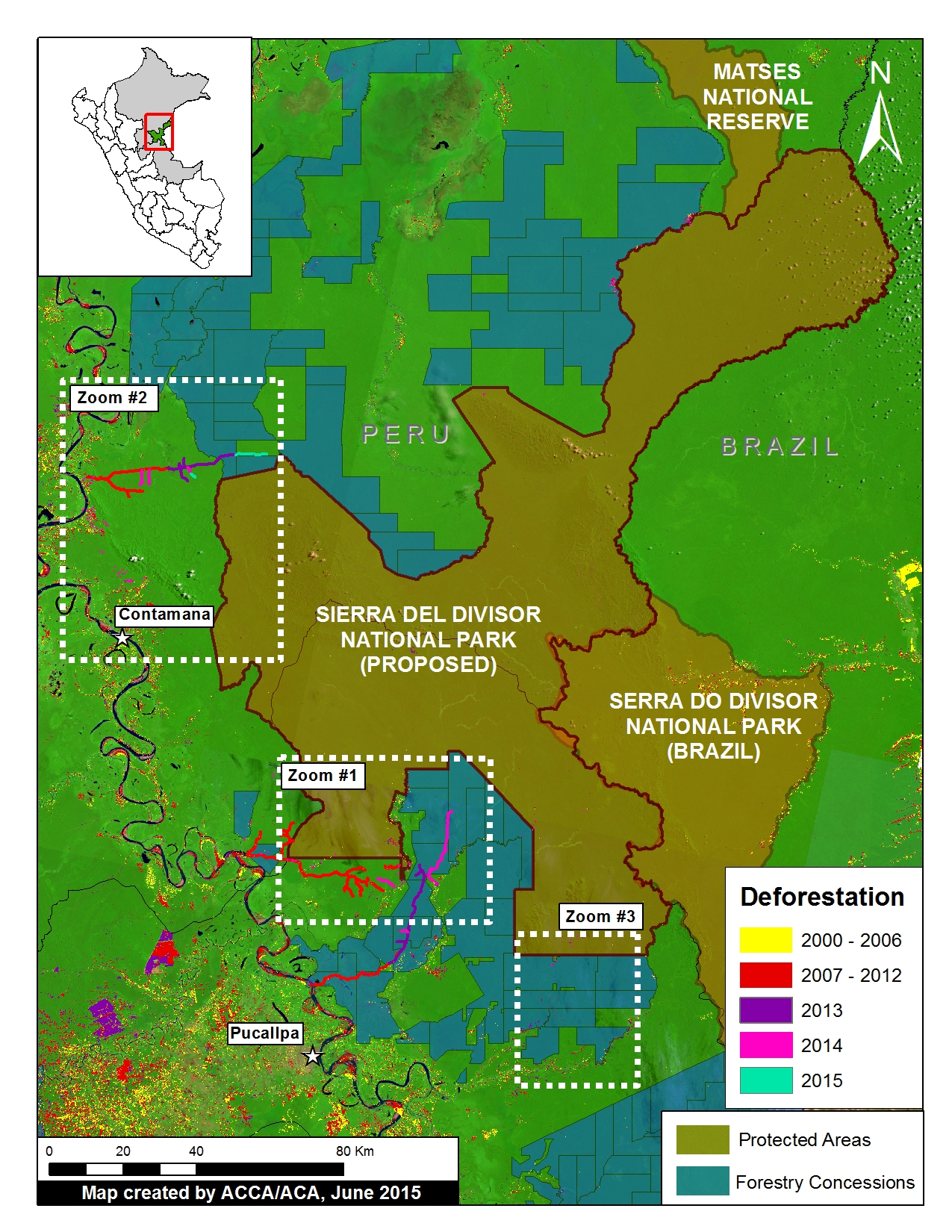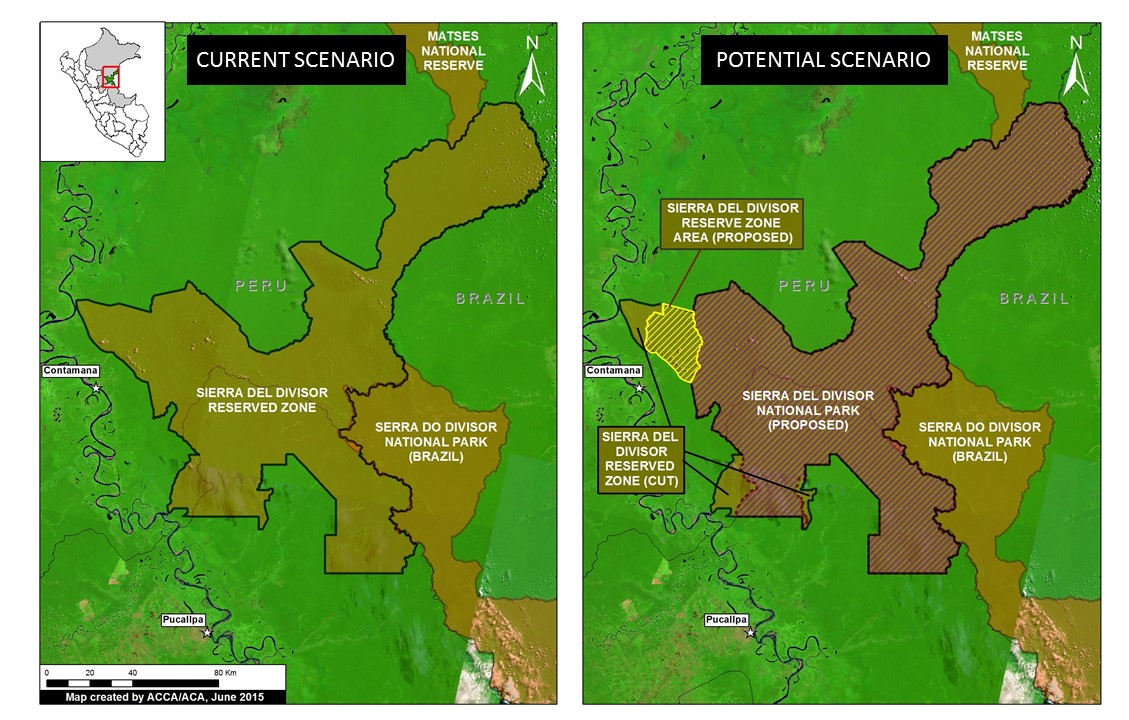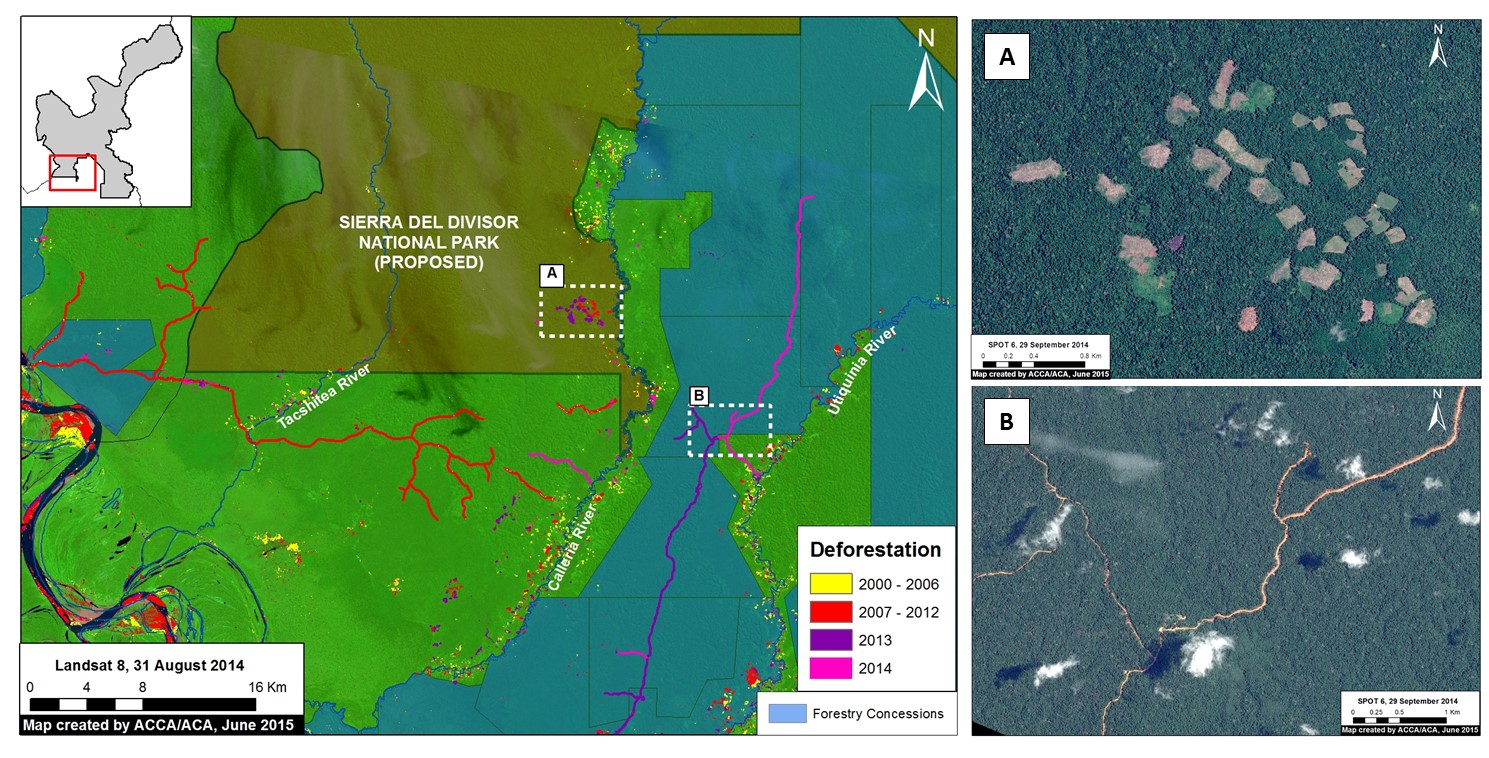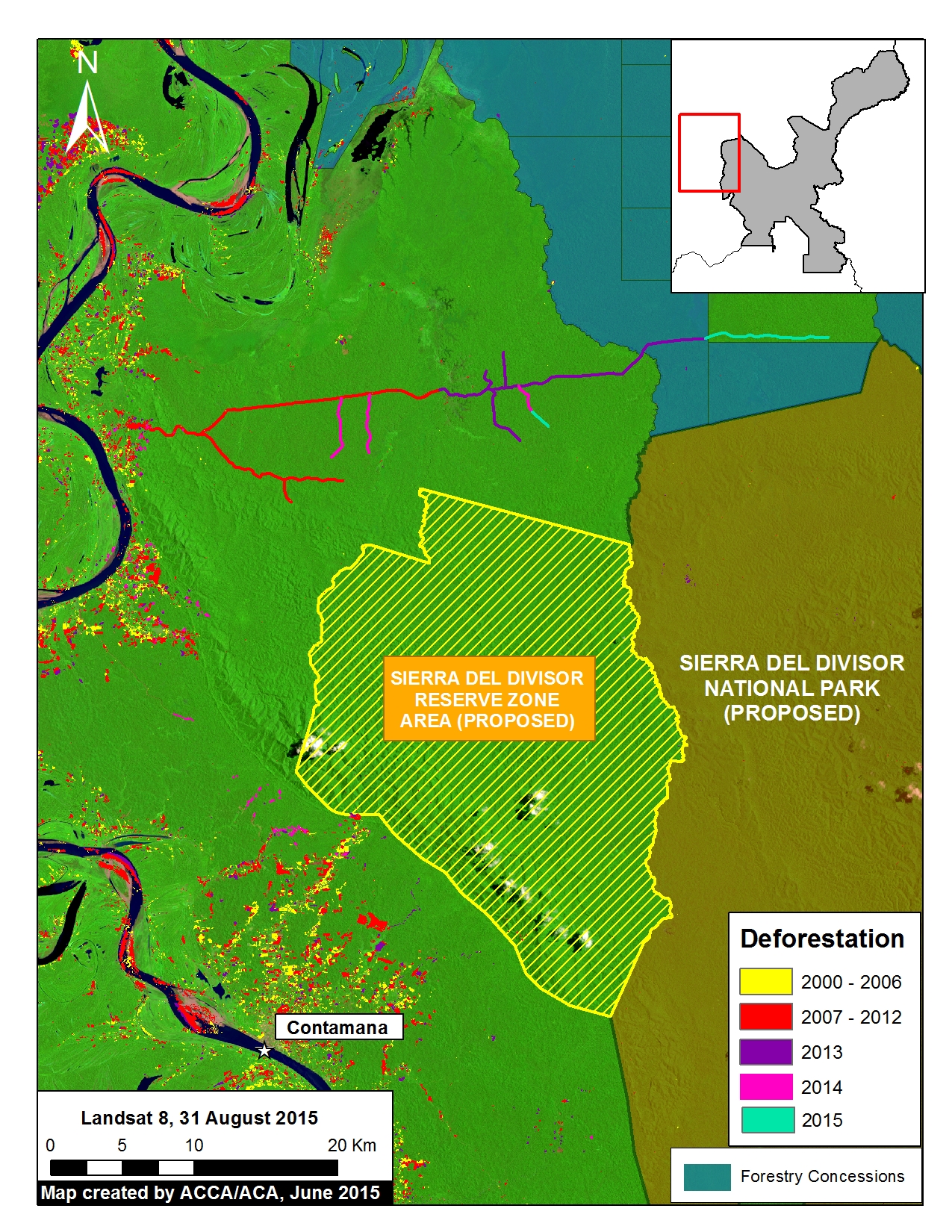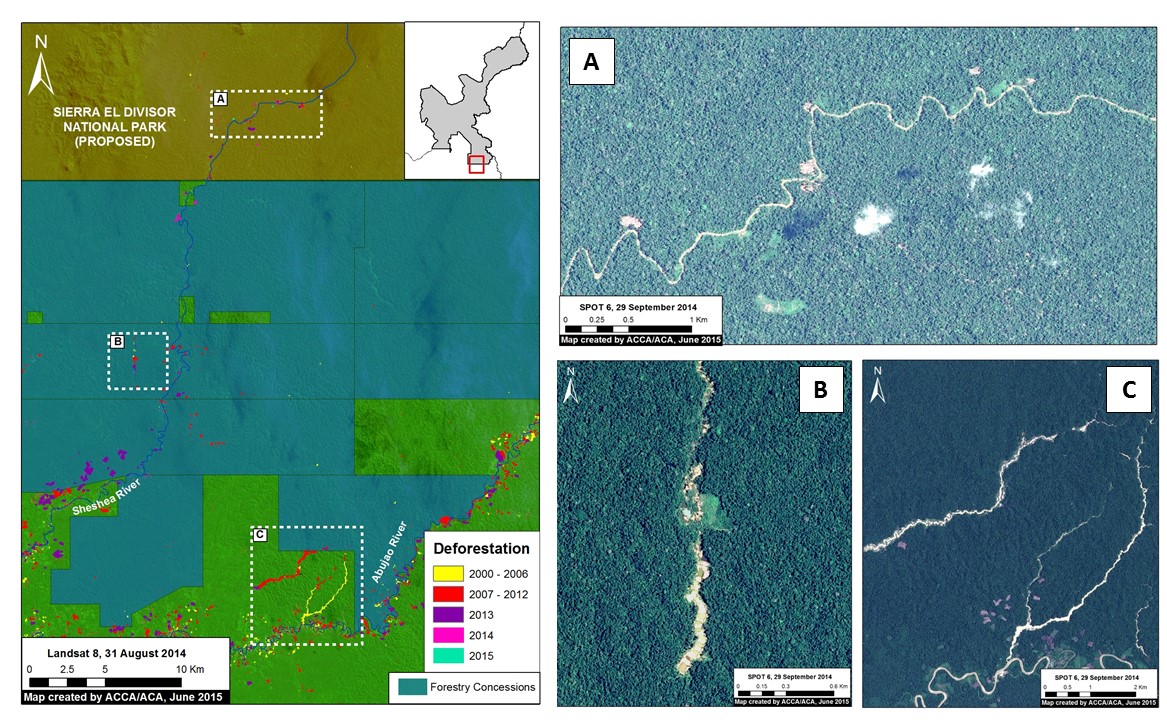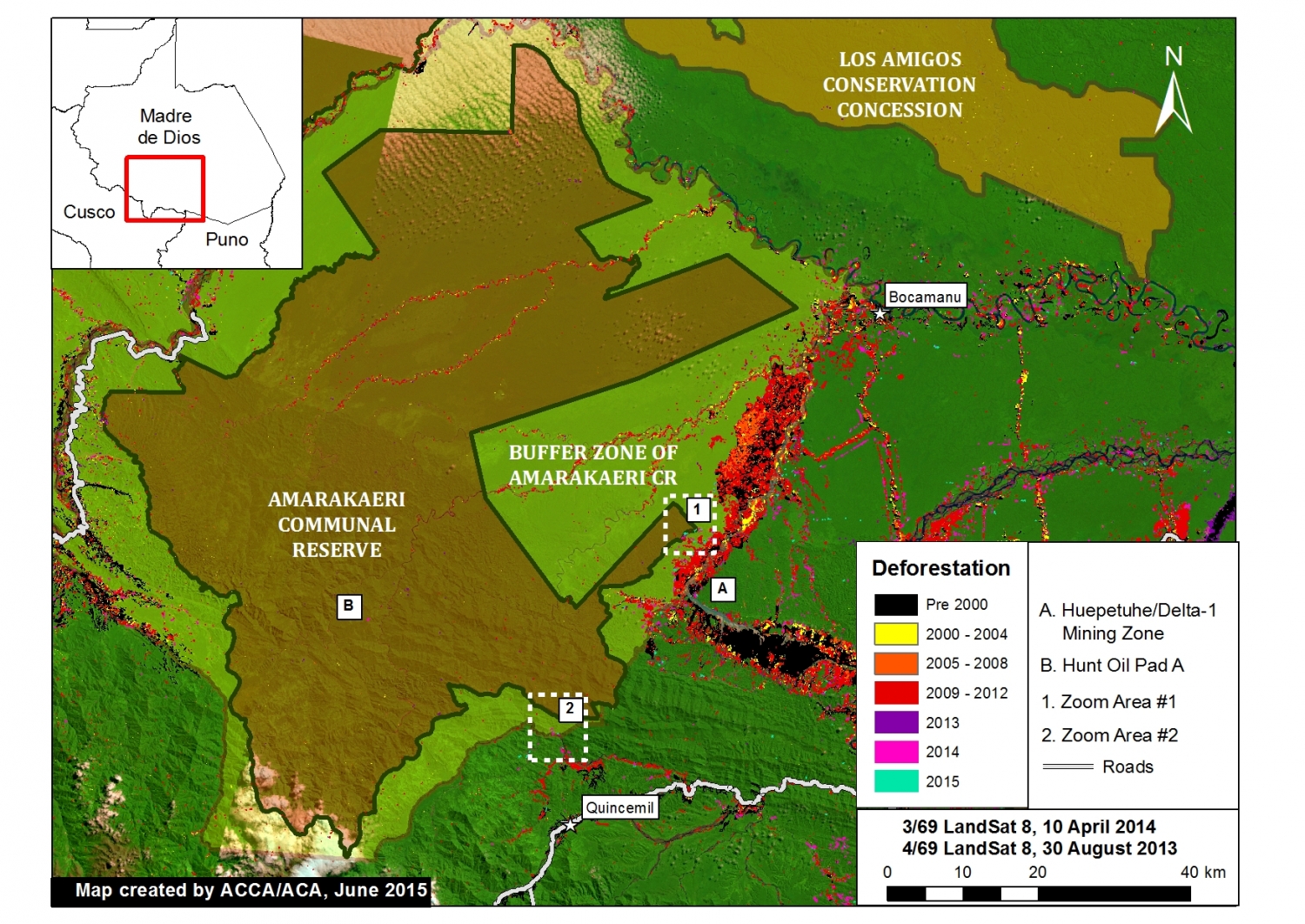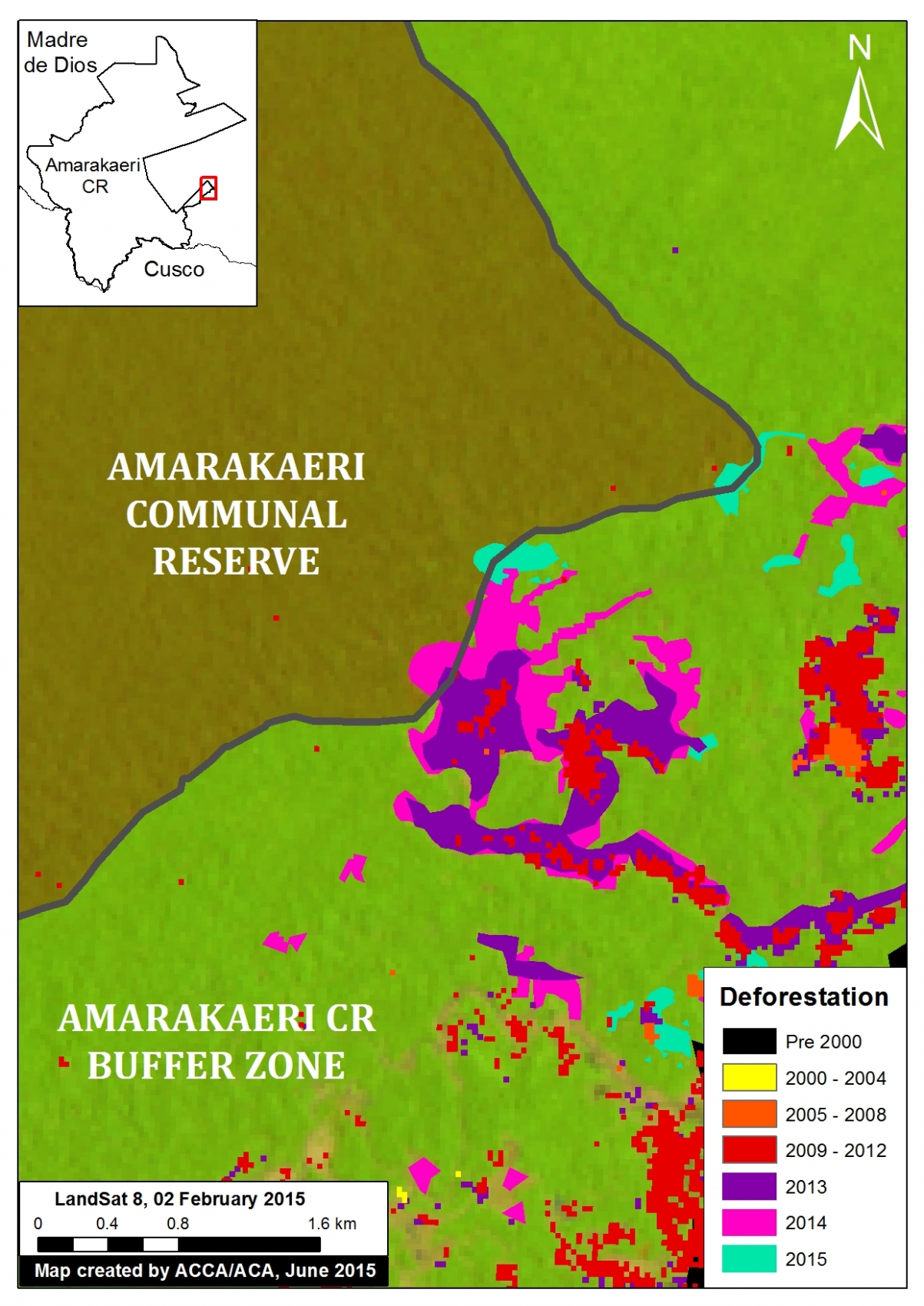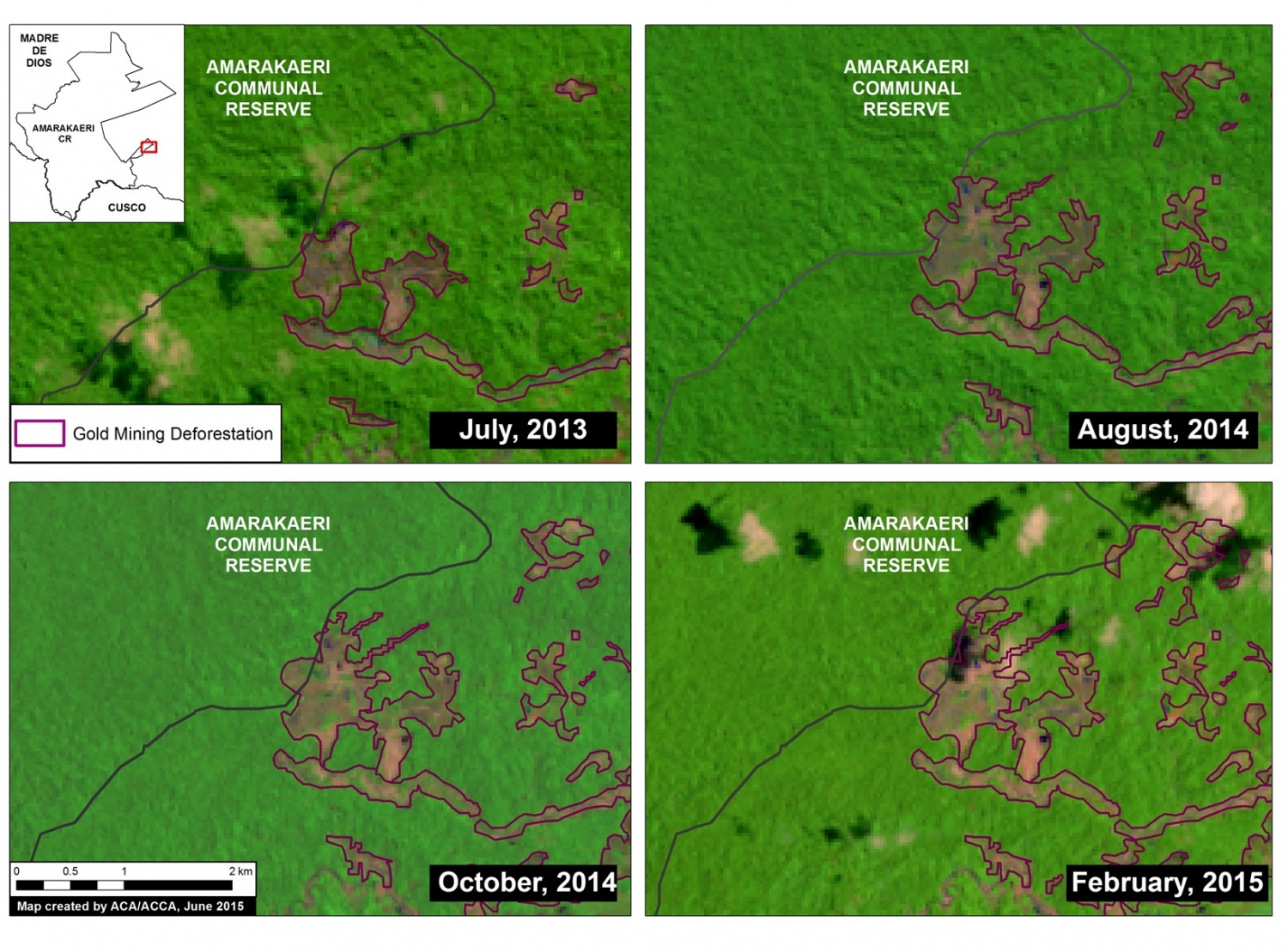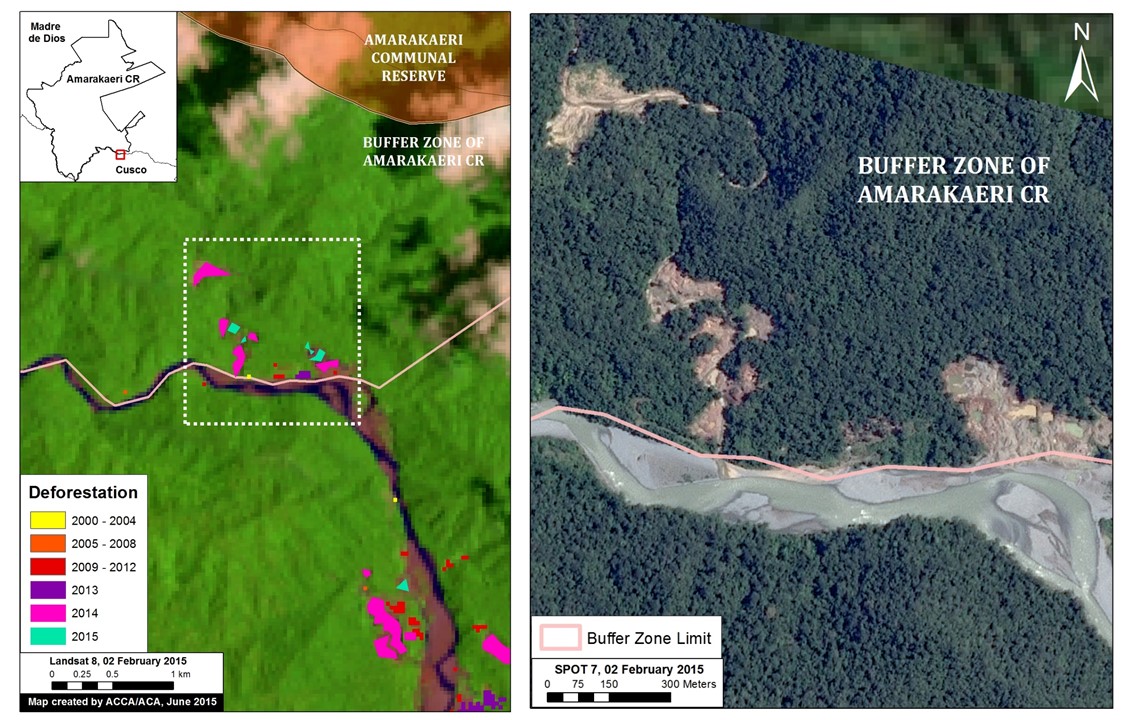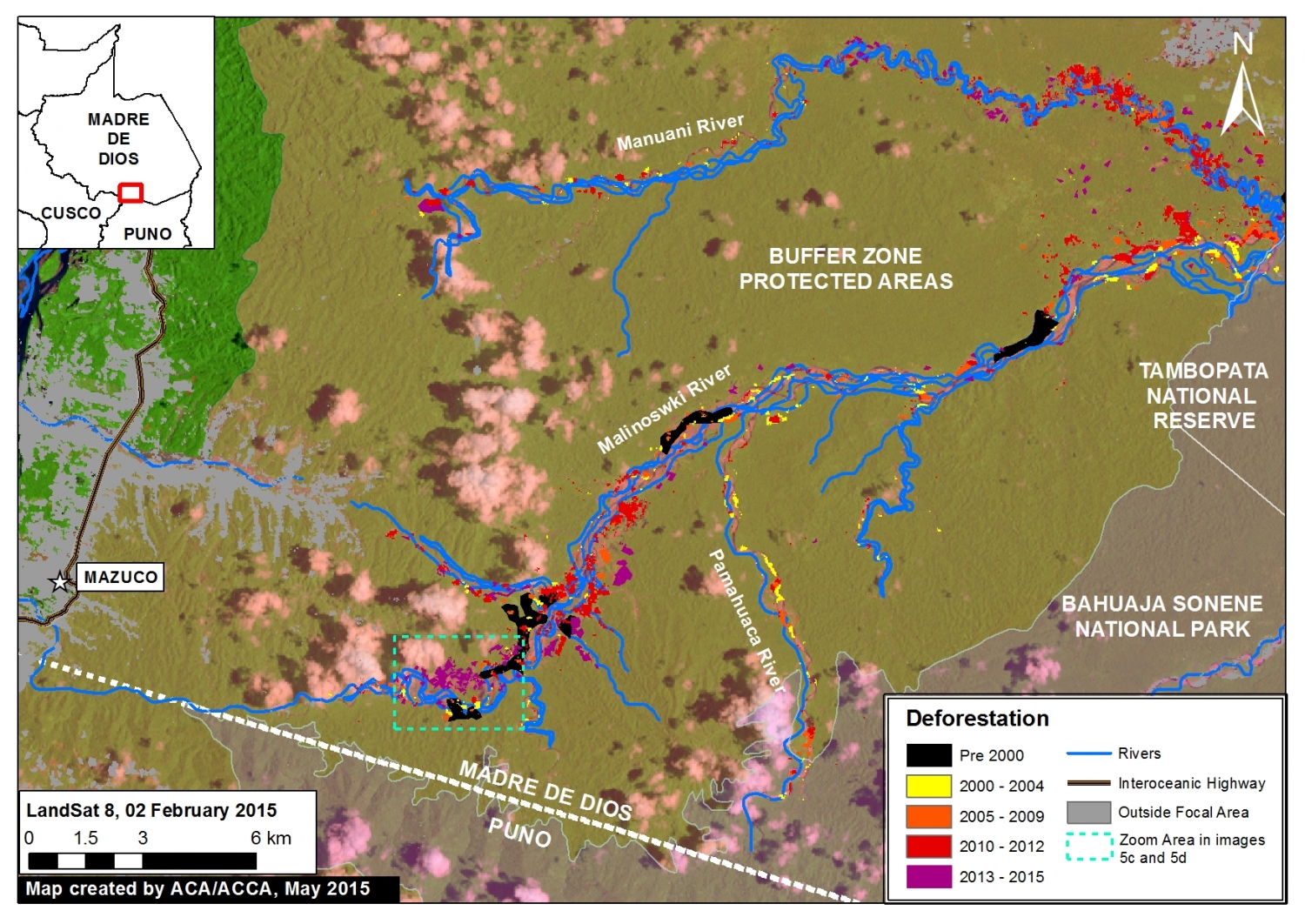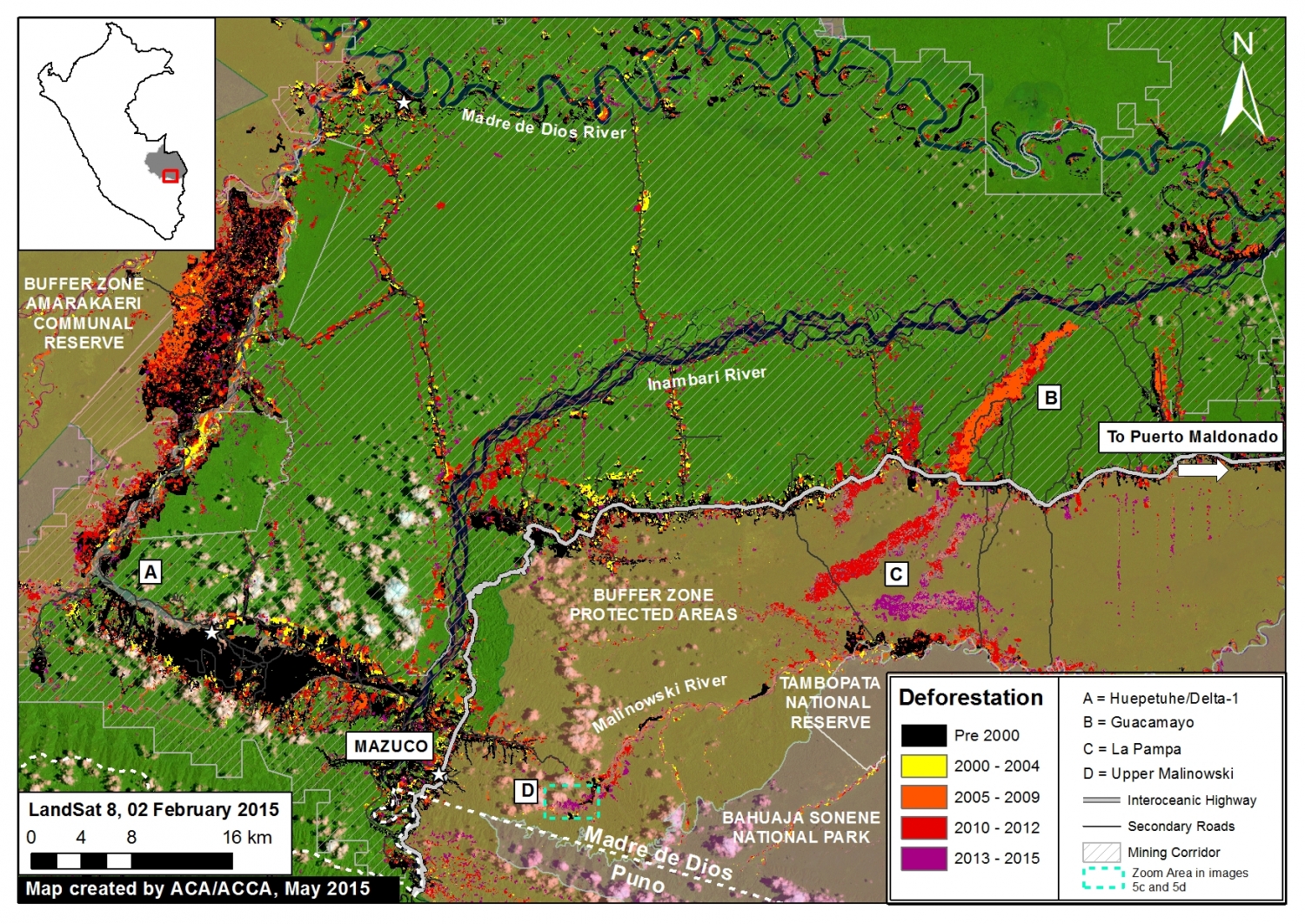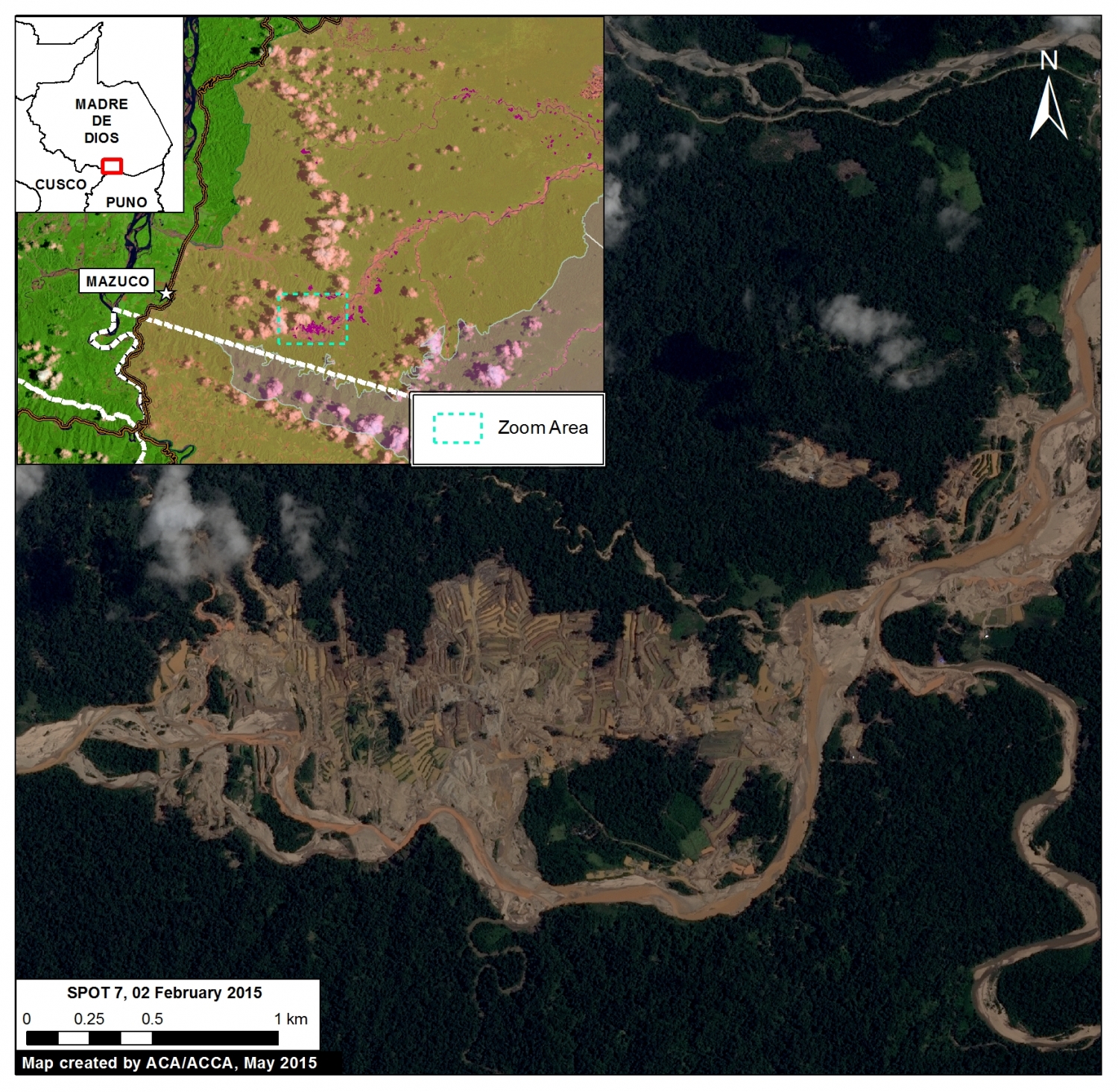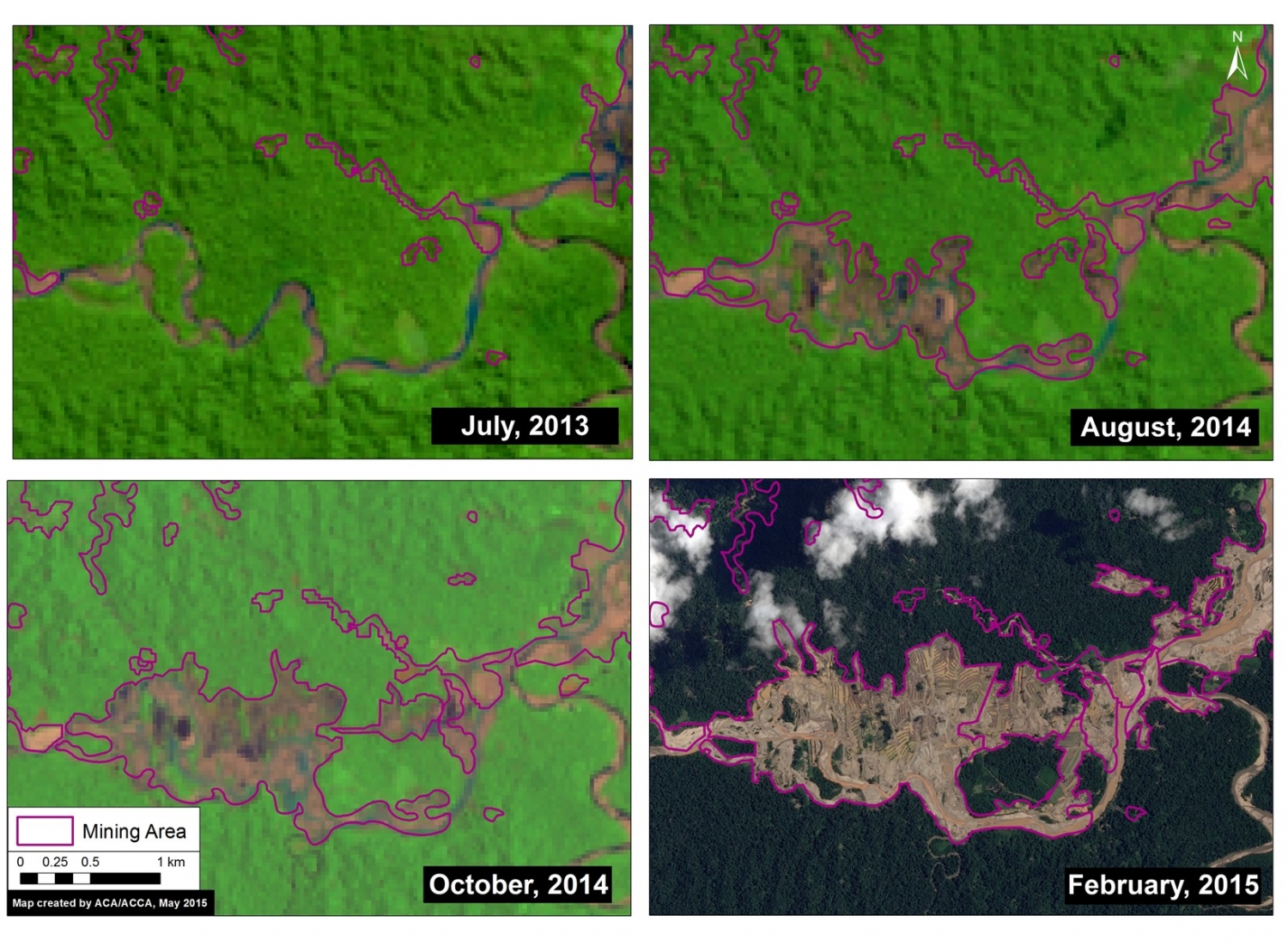Mining News Watch #16 covers the time period March 17- June 10, 2015
Top Stories
-
The Peruvian government announced in May that new complementary regulations for the formalization process will be released in August.
-
To date, only 16 permits have been issued for formalized mining, affecting just 631 of the 58,835 miners that started the process in Puno.
-
According to a pair of technical reports by the Amazon Conservation Association (ACA) and Conservaciόn Amazόnica (ACCA), 2,500 hectares has been deforested in the Tambopata National Reserve buffer zone due to illegal mining in the past two years.
-
The Ministry of the Environment (MINAM) reported that 40.5 tons of mercury enter the rivers of Madre de Dios annually.
-
The Foreign Relations Committee of the Peruvian Congress approved the Minamata Convention, and sent it to the full Peruvian Congress for final approval.
Recent Government Action
- During a press conference in May, the Minister of Energy and Mines (MEM), Rosa María Ortiz, said that current regulations are not solving the illegal mining problem, and that in two months new complementary rules will be published to strengthen the formalization process. She stated that one focus of the new regulations will be to “achieve formalization for those that have not been able to do so.”[1]
- The Regional President of Madre de Dios, Luis Otsuka, met with the Minister of the Interior, José Luis Pérez Guadalupe, in April to discuss possible actions to combat crime in Madre de Dios. The government is attempting to reduce illegal activity in Madre de Dios by increasing police patrols in critical zones and increasing containment of fuel used for illegal mining.[2] Guadalupe stated that the eradication of illegal mining is a priority for the national government. Along with the General Director of Police, Guadalupe visited the region to analyze the checkpoints and infrastructure designed to combat illegal mining in the area.[3]
- The Peruvian government has invested over $63.5 million to be used for remediation projects in various areas damaged by illegal mining. Some of this money will focus on Madre de Dios, including the buffer zone of the Tambopata National Reserve.[4]
Formalization Process
- The Office of the Ombudsman (La Defensoría del Pueblo) revealed that the Peruvian government has thus far only issued 16 permits for formalized mining, affecting about 631 miners, contrasting with the 58,835 informal miners that started the formalization process in Puno. The difficult and expensive “saneamiento” (restructuring) process, which involves the legal ordering of informal mines, coupled with the lack of human and financial resources, are some of the cited reasons for the slow formalization process.[5]
- A new response to the low completion rates is the use of mediators to create a space of dialogue for the miners.[6]
- During a recent visit by Madre de Dios Regional President Luis Otsuka with Peruvian President Ollanta Humala in March, Otsuka criticized the President for the illegal mining situation in the country. Otsuka stated that he “will continue to sell [his] gold on the black market” and that “in the past three years not one miner was formalized [in Madre de Dios], only six deaths. Things will not change if the laws are not modified.” Otsuka also expressed his frustration that current regulations seem to target small miners who only want to progress in the formalization process.[7]
- Environmental specialist Juan Víctor Ortega Vargas found that in Puno, the only department in Peru with any formalized mining companies, the high cost of performing the Corrective Environmental Management Instrument (IGAC) is the main limitation for illegal miners attempting to complete the process. The IGAC is the fifth (out of six) step of the formalization process and is basically a streamlined Environmental Impact Assessment designed to prevent and control environmental impacts. However, performing the IGAC costs each company approximately $10,000.[8,9]
Deforestation
- A pair of technical reports published by the ACA and ACCA revealed that a total of 2,500 hectares have been deforested due to gold mining in the Tambopata National Reserve buffer zone over the past two years.[10, 11, 12]
Mercury Regulation
- The Vice Minister of MINAM, Mariano Castro, released a statement in March saying that as a result of illegal mining, a total of 40.5 tons of mercury enters the rivers of Madre de Dios each year. This quantity comprises 5.6% of global mercury emissions, which reached 721 tons in 2010. Castro also announced that MINAM will be working with the U.S. embassy and the Blacksmith Institute to reach an agreement on financing further studies about reductions in mercury emission.[13] The U.S. State Department gave the Blacksmith Institute one million dollars to conduct mercury emission reduction research in Madre de Dios.[14]
- In May, the Foreign Relations Committee of the Peruvian Congress approved the Minamata Convention, a global treaty that seeks to avoid further damage to human health and the environment from mercury. This is a strong sign that Congress will ratify the convention.[15] The Office of the Ombudsman submitted a formal request to Congress on June 4th asking them to formally approve Minamata.[16]
- A regional workshop on reducing mercury use took place in Lima at the end of March. The workshop was intended to encourage more countries to ratify the Minamata Convention. Government officials specializing in the fight against illegal mining from Peru, Colombia, Brazil, and Ecuador participated in the workshop, sharing experiences and successful practices.[17]
- In March, Luis Fernández, a tropical ecologist from Stanford, interviewed with El Comercio in order to raise support for the Minamata Convention. He discussed the results from his 2013 research on mercury pollution in the Amazon, and warned that 250,000 Peruvians are currently exposed to mercury contamination.[18]
- Police agents seized more than 15 kg of mercury that was being transported illegally near a mining zone in the Inambari district of Madre de Dios.[19]
Other
- The Third Civil Chamber of the Superior Court of Lima sided with the Agency for Environmental Assessment and Enforcement (OEFA), saying that OEFA regulations are constitutional and do not infringe on any rights to miners and mining companies. This ruling gives OEFA power to combat illegal mining and to determine responsibility for environmental damage.[20]
- Currently, around 100 kg of illegal gold travel across the border from Peru to Bolivia every week, where the gold can then be sold to U.S. and European markets.[21] Peru and Bolivia met in May to discuss tactics for protecting their shared border from criminal activity related to illegal mining, particularly the smuggling of fuel across the border. Peru promised to share its experience with Bolivia, which initiated its mining laws only a year ago.[22]
- The Peruvian Society for Environmental Law (SPDA) and the International Union for Conservation of Nature (IUCN) launched a blog called “Las rutas del oro” (Routes of Gold) that will provide information on various aspects of illegal mining in different Amazonian countries.[23]
- According to the Peruvian Financial Intelligence Unit (UIF), between January and December 2014, illegal mining generated $2,765 million, surpassing illegal drug trafficking, which generated $78 million.[24] The Office for National Electoral Processes reports that money from both mining and drug trafficking is making its way into the electoral campaigns of political organizations.[25]
- The indigenous community of Tres Islas, located in Madre de Dios, demanded that the government fulfill a sentence forbidding outsiders to be within their designated indigenous land. The goal is to protect indigenous land from illegal gold mining. The claim is directed to the Constitutional Court, which unanimously declared in 2012 that the tribes have the right to control their lands.[26]
Notes: The ACA Mining News Watch focuses mostly on issues pertaining to the Peruvian Amazon and may not cover issues related to non-Amazonian parts of the country. We would like to credit ProNaturaleza’s “Observatorio Amazonia” as our primary resource for articles related to illegal mining in Peru.
ACA contact for Comments/Questions: Matt Finer (mfiner@amazonconservation.org)
Citation:
DeRycke E, Finer M (2015). Peru Mining News Watch Report #16. Amazon Conservation Association. https://www.maapprogram.org/2015/06/mining-news-watch-16/
